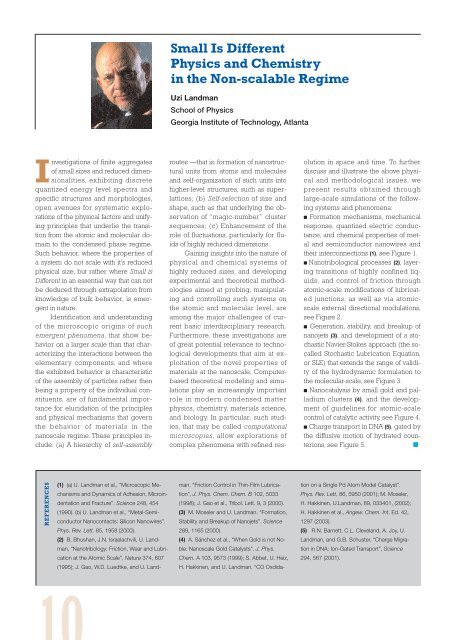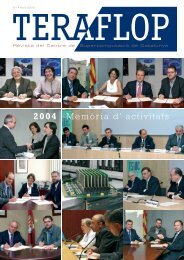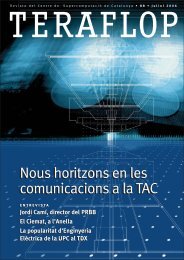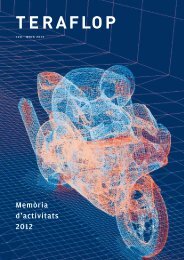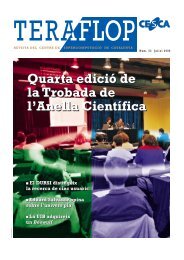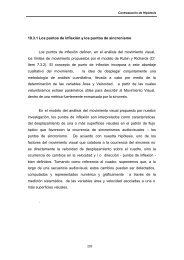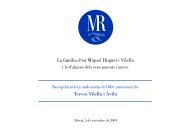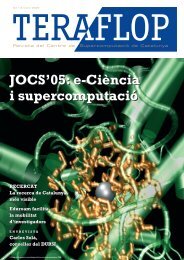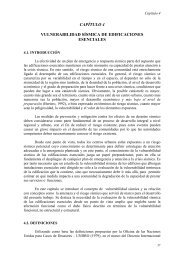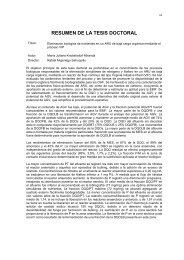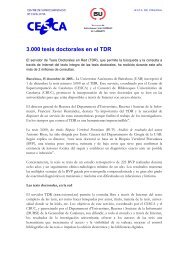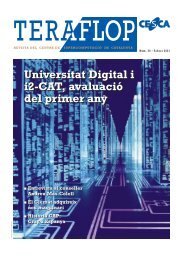Teraflop 73 - Novembre - cesca
Teraflop 73 - Novembre - cesca
Teraflop 73 - Novembre - cesca
Create successful ePaper yourself
Turn your PDF publications into a flip-book with our unique Google optimized e-Paper software.
Investigations of finite aggregates<br />
of small sizes and reduced dimensionalities,<br />
exhibiting discrete<br />
quantized energy level spectra and<br />
specific structures and morphologies,<br />
open avenues for systematic explorations<br />
of the physical factors and unifying<br />
principles that underlie the transition<br />
from the atomic and molecular domain<br />
to the condensed phase regime.<br />
Such behavior, where the properties of<br />
a system do not scale with it’s reduced<br />
physical size, but rather where Small is<br />
Different in an essential way that can not<br />
be deduced through extrapolation from<br />
knowledge of bulk behavior, is emergent<br />
in nature.<br />
Identification and understanding<br />
of the microscopic origins of such<br />
emergent phenomena, that show behavior<br />
on a larger scale than that characterizing<br />
the interactions between the<br />
elementary components, and where<br />
the exhibited behavior is characteristic<br />
of the assembly of particles rather then<br />
being a property of the individual constituents,<br />
are of fundamental importance<br />
for elucidation of the principles<br />
and physical mechanisms that govern<br />
the behavior of materials in the<br />
nanoscale regime. These principles include:<br />
(a) A hierarchy of self-assembly<br />
REFERENCES<br />
(1) (a) U. Landman et al., “Microscopic Mechanisms<br />
and Dynamics of Adhesion, Microindentation<br />
and Fracture”. Science 248, 454<br />
(1990). (b) U. Landman et al., “Metal-Semiconductor<br />
Nanocontacts: Silicon Nanowires”.<br />
Phys. Rev. Lett. 85, 1958 (2000).<br />
(2) B. Bhushan, J.N. Israelachvili, U. Landman,<br />
“Nanotribology: Friction, Wear and Lubrication<br />
at the Atomic Scale”, Nature 374, 607<br />
(1995); J. Gao, W.D. Luedtke, and U. Land-<br />
Small Is Different<br />
Physics and Chemistry<br />
in the Non-scalable Regime<br />
Uzi Landman<br />
School of Physics<br />
Georgia Institute of Technology, Atlanta<br />
routes —that is, formation of nanostructural<br />
units from atoms and molecules<br />
and self-organization of such units into<br />
higher-level structures, such as superlattices;<br />
(b) Self-selection of size and<br />
shape, such as that underlying the observation<br />
of “magic-number” cluster<br />
sequences; (c) Enhancement of the<br />
role of fluctuations, particularly for fluids<br />
of highly reduced dimensions.<br />
Gaining insights into the nature of<br />
physical and chemical systems of<br />
highly reduced sizes, and developing<br />
experimental and theoretical methodologies<br />
aimed at probing, manipulating<br />
and controlling such systems on<br />
the atomic and molecular level, are<br />
among the major challenges of current<br />
basic interdisciplinary research.<br />
Furthermore, these investigations are<br />
of great potential relevance to technological<br />
developments that aim at exploitation<br />
of the novel properties of<br />
materials at the nanoscale. Computerbased<br />
theoretical modeling and simulations<br />
play an increasingly important<br />
role in modern condensed matter<br />
physics, chemistry, materials science,<br />
and biology. In particular, such studies,<br />
that may be called computational<br />
microscopies, allow explorations of<br />
complex phenomena with refined res-<br />
man. “Friction Control in Thin-Film Lubrication”,<br />
J. Phys. Chem. Chem. B 102, 5033<br />
(1998); J. Gao et al., Tribol. Lett. 9, 3 (2000).<br />
(3) M. Moseler and U. Landman. “Formation,<br />
Stability and Breakup of Nanojets”. Science<br />
289, 1165 (2000).<br />
(4) A. Sánchez et al., “When Gold is not Noble:<br />
Nanoscale Gold Catalysts”. J. Phys.<br />
Chem. A 103, 95<strong>73</strong> (1999); S. Abbet, U. Heiz,<br />
H. Hakkinen, and U. Landman. “CO Oxdida-<br />
olution in space and time. To further<br />
discuss and illustrate the above physical<br />
and methodological issues, we<br />
present results obtained through<br />
large-scale simulations of the following<br />
systems and phenomena:<br />
■ Formation mechanisms, mechanical<br />
response, quantized electric conductance,<br />
and chemical properties of metal<br />
and semiconductor nanowires and<br />
their interconnections (1), see Figure 1.<br />
■ Nanotribological processes (2), layering<br />
transitions of highly confined liquids,<br />
and control of friction through<br />
atomic-scale modifications of lubricated<br />
junctions, as well as via atomicscale<br />
external directional modulations,<br />
see Figure 2.<br />
■ Generation, stability, and breakup of<br />
nanojets (3), and development of a stochastic<br />
Navier-Stokes approach (the socalled<br />
Stochastic Lubrication Equation,<br />
or SLE) that extends the range of validity<br />
of the hydrodynamic formulation to<br />
the molecular-scale, see Figure 3.<br />
■ Nanocatalysis by small gold and palladium<br />
clusters (4), and the development<br />
of guidelines for atomic-scale<br />
control of catalytic activity, see Figure 4.<br />
■ Charge transport in DNA (5), gated by<br />
the diffusive motion of hydrated counterions,<br />
see Figure 5. ■<br />
tion on a Single Pd Atom Model Catalyst”.<br />
Phys. Rev. Lett, 86, 5950 (2001); M. Moseler,<br />
H. Hakkinen, U.Landman, 89, 033401, (2002);<br />
H. Hakkinen et al., Angew. Chem. Int. Ed. 42,<br />
1297 (2003).<br />
(5) R.N. Barnett, C.L. Cleveland, A. Joy, U.<br />
Landman, and G.B. Schuster. “Charge Migration<br />
in DNA: Ion-Gated Transport”, Science<br />
294, 567 (2001).


